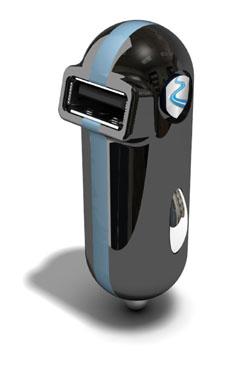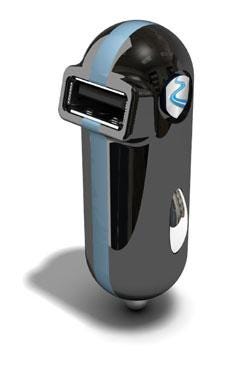April 2, 2014

By now, we all know the dangers of distracted driving. Texting, calling, and other types of phone use while driving cause nearly a half million accidents and thousands of deaths every year. Yet too many drivers, particularly teenagers, refuse to stop using their phones when they get behind the wheel. A Bluetooth-enabled device can help solve the problem.
Called SafeRide, the device works in conjunction with a smartphone app to lock the driver's smartphone screen, mute the audio, and disable the hardware buttons as soon as the car starts moving. Once the car stops moving, the phone automatically comes back to life.

Plenty of smartphone apps ostensibly do the same things. But these distracted driving apps have two fatal flaws. Because phone apps detect motion by tapping into the phone's GPS, they can't tell if someone is actually driving a vehicle or just riding in one. Even worse, many apps can be disabled by turning off the phone's GPS or entering an unlock code. The ability to disable the app too easily defeats the purpose.
SafeRide eliminates both of these flaws with a piece of hardware that plugs into any one of the vehicle's 12V power ports. The device communicates via Bluetooth with an app that resides on the driver's phone.
Working together, the SafeRide device and app determine that a specific person is in the car and that the car is in motion. Only then does the phone go into lockdown. And it stays that way until the car stops moving -- though there are provisions for parental control, emergency calls, and use with hands-free audio systems.
Parents of teenage drivers will no doubt be interested in this technology as a countermeasure to distracted driving. Engineers should pay attention to it too since it offers valuable design lessons related to Bluetooth implementation and mechanical design.
To make the Bluetooth connectivity easy to implement, a place-and-play Bluetooth 2.1 + EDR module was chosen. In the design example, a Panasonic PAN1322 was used. It's a small part (15.6 mm x 8.7 mm x 2.8 mm) with an onboard antenna.
SafeRide doesn't require Bluetooth's full networking and data transfer capabilities. Instead, it verifies the presence of the phone in the car. Bluetooth is used solely as a proximity beacon. There's no pairing or ongoing data streaming, and the phone app handles the detection of car motion.
Normally, this type of simple sensing application would be a natural fit for Bluetooth Low Energy (BLE). However, BLE was ruled out in order to target the largest possible market, including older Android devices. Also, power consumption is less of an issue because the device is plugged into a power source.
Richard Trueman is a custom components product manager for Panasonic.
Related posts:
About the Author(s)
You May Also Like





